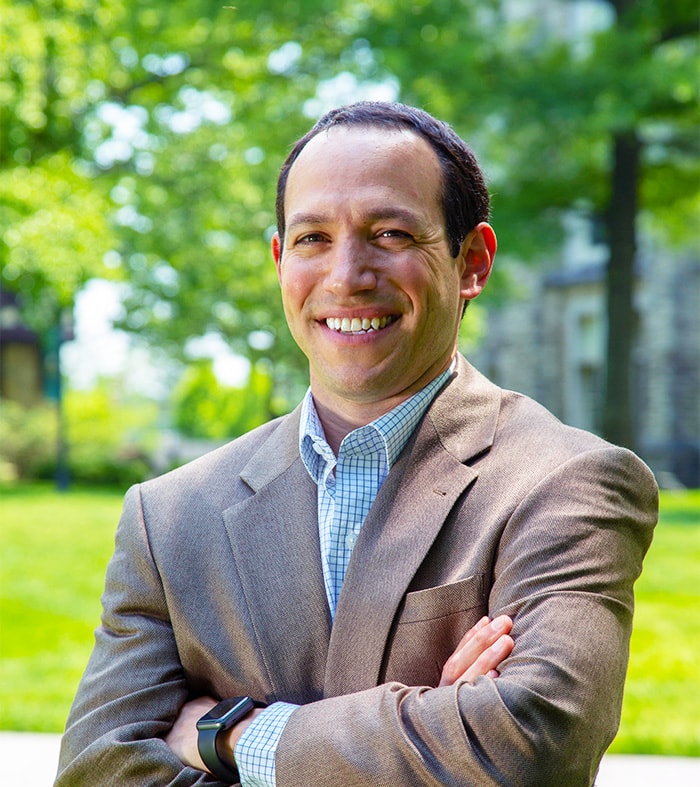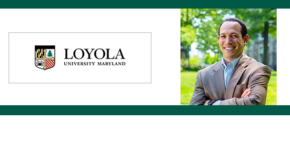 On Loyola University Maryland Week: How does a brand market effectively during a pandemic?
On Loyola University Maryland Week: How does a brand market effectively during a pandemic?
Greg Hoplamazian, associate professor of communication, donates some good advice to help out.
Greg Hoplamazian, Ph.D., associate professor of communication, works to understand what his students are going through—in and out of the classroom—to promote a positive learning environment. “Whether I am teaching students research concepts or how to analyze an advertising message, developing a habit of critical thinking is something I believe will serve my students well after they leave Loyola,” he says. Dr. Hoplamazian earned his master’s degree and his Ph.D. in Communication from the Ohio State University. His research focuses on media psychology and understanding how people process advertising messages, with an emphasis on the impact of social identities such as ethnicity and gender. Dr. Hoplamazian, who began teaching at Loyola in 2011, says communication majors at Loyola develop practical skills through hands-on experience: “The communication capstone course is a valuable experience for our students. They work with real clients and develop professional media content, which helps propel them beyond Loyola.
Marketing During the Pandemic
Creativity is hard no matter what. But for advertisers during the COVID-19 epidemic and BLM movement, it has been nearly impossible. Perhaps you’ve seen the mashup of COVID-19 themed ads from major brands, early on during the pandemic – where they all strike the same tone and utter the same phrases and use the same imagery. Or maybe you’ve seen the critiques of brands who offered a single social media post of solidarity with the black community using white text on a black background, ya know, like everyone else.
For an industry that prides itself on creativity, and a social-cultural moment where being a leader rather than a follower is important, being cautious with your advertising message is not a winning strategy. Consumers don’t need to be reminded how bad things are during COVID and they aren’t looking for another message of support for the BLM movement that don’t feel is genuine.
So what kind of messages are working? For a COVID-19 world, don’t coddle your audience, but instead seek to help them. Craft messages that directly focus on what your audiences are looking for, and focus on how you can solve these problems. How does your organization help bridge the social connectedness we are all lacking or allow us to live our lives more safely.
For brands responding to the BLM movement, focus on actions over words. Remember, this moment is not about you. It’s about making sure your employees feel safe and supported and identifying ways to make the world more just and equitable through internal and external business practices.
What hiring practices can you change? What data can you report publicly to be held accountable? What black-owned organizations can you support?
Brands or organizations that can do those things will find it much easier to talk about themselves during this pandemic, because they will ultimately be talking about what matters most to you and me.

Comments
One response to “Greg Hoplamazian, Loyola University Maryland – Marketing During the Pandemic”